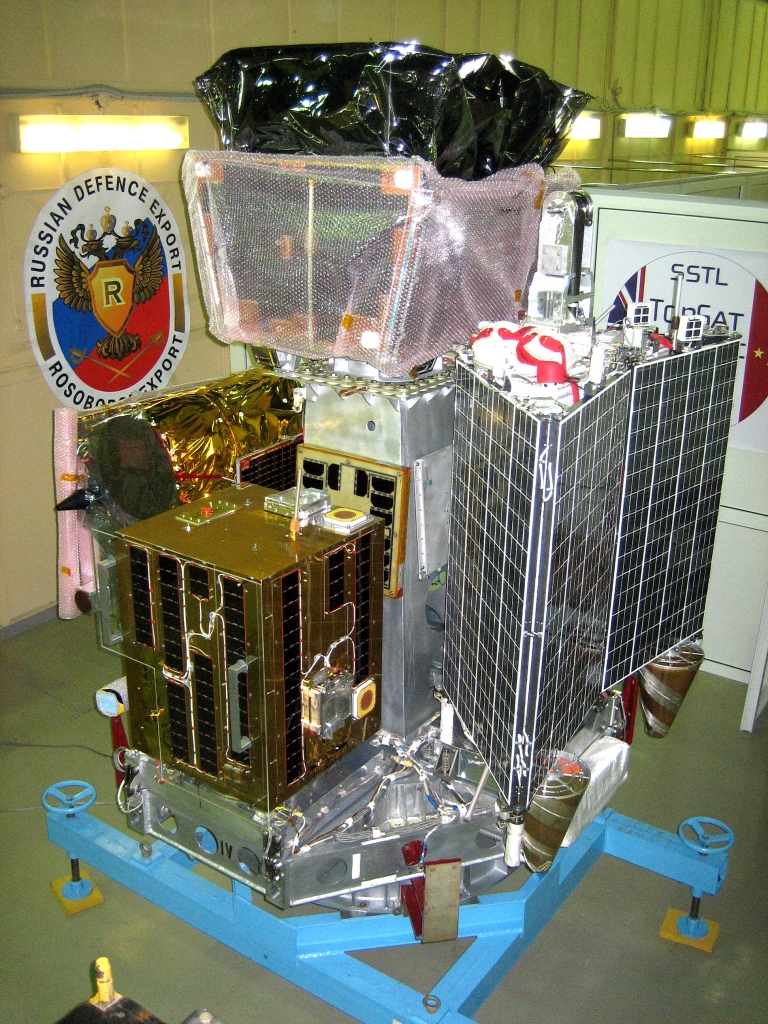May 14-2014

Russia and Iran have reportedly signed a deal under which Russia may build and launch Iranian satellites, a seeming admission that Iran’s space program is not advancing very quickly.
The deal, reported Monday by the Moscow daily Izvestia, does not mean Iran is ending its space program. The deal reportedly provides for Russia to train Iranian astronauts, indicating Iran still wants to put a man into space. But the talks of having Russia launch Iranian satellites suggests Iran accepts that it cannot put up the large satellites it wants in the near term.
Izvestia said the deal, which has not been publicly announced by either country, was sparked in part by the West’s sanctions targeting Russia over the Ukrainian crisis.
“A protocol on cooperation was signed April 10 in Tehran after the fifth session of a Russian-Iranian work group on space cooperation,” the newspaper said, citing a source in Roscosmos, Russia’s national space agency.
It said the part of the agreement of greatest interest to Tehran gives Iran access to Russia satellite images. Russia pledged to provide images of earth gathered by its Resurs-DK and Resurs-P satellites, which allow taking photos with resolution up to 70 centimeters per pixel, Izvestia said, citing the text of the protocol it obtained.
Iran plans to build ground stations capable of receiving information directly from the Russian constellation of satellites.
Beyond that, Moscow may both build and launch reconnaissance satellites under a contract with Iran. Another contract may be negotiated with Iran for a telecommunication satellite, which would be launched to a geo-synchronous orbit by Russia.
Iran has been planning such a geo-synchronous communications satellite since before the revolution. It has been named Zohreh. But it has never gotten off the ground.
While Iran has launched three satellites into earth orbit, they have all been micro-satellites weighing less than 100 kilograms. Telecommunications satellites weigh tons. The heaviest satellite in orbit is a European one weighing more than 7,000 kilograms.
Russia built and launched the 160-kilo Sina-1 satellite for Iran. It went into orbit October 27, 2005, and is still circling the earth. Of the three satellites launched by Iran, the longest stay in orbit was just 82 days for the first to be launched. Iran has not orbited a satellite since February 2012, despite numerous pronouncements of upcoming launches, all of which suggests a troubled program.
Finally, Izvestia said, Russia may provide its facilities and expertise to help Iran with its manned space exploration program.
“The Iranian side is preparing a request for training of cosmonauts, to which the Russian side will respond with an offer in a matter of a month,” Izvestia quoted the document as saying.
Ironically, if Russia does train Iranians to go into space, it would be done at the same site where American astronauts are trained before taking a trip to the International Space Station in a Russian Soyuz spacecraft, the newspaper noted.
The space deal comes just as the US has downgraded its relations with Russia in all spheres, including space exploration, as part of its sanctions over Ukraine. For instance, now Russian space companies cannot buy American electronic components, which were previously used in some Russian satellites.
Iran getting access to earth observation satellites, which have both civilian and military applications, is bound to be opposed by Israel and Saudi Arabia, both regional opponents of Iran and close allies of the US.
Dmitry Paison, science director at Skolkovo’s space cluster, told Izvestia the deal as it is does not pose a significant threat to American interests. “In the protocol signed with the Iranian space agency, I don’t see any critical technology transfers…. If those technologies were at the table, cooperation with Iran would be much more provocative,” he said.






















